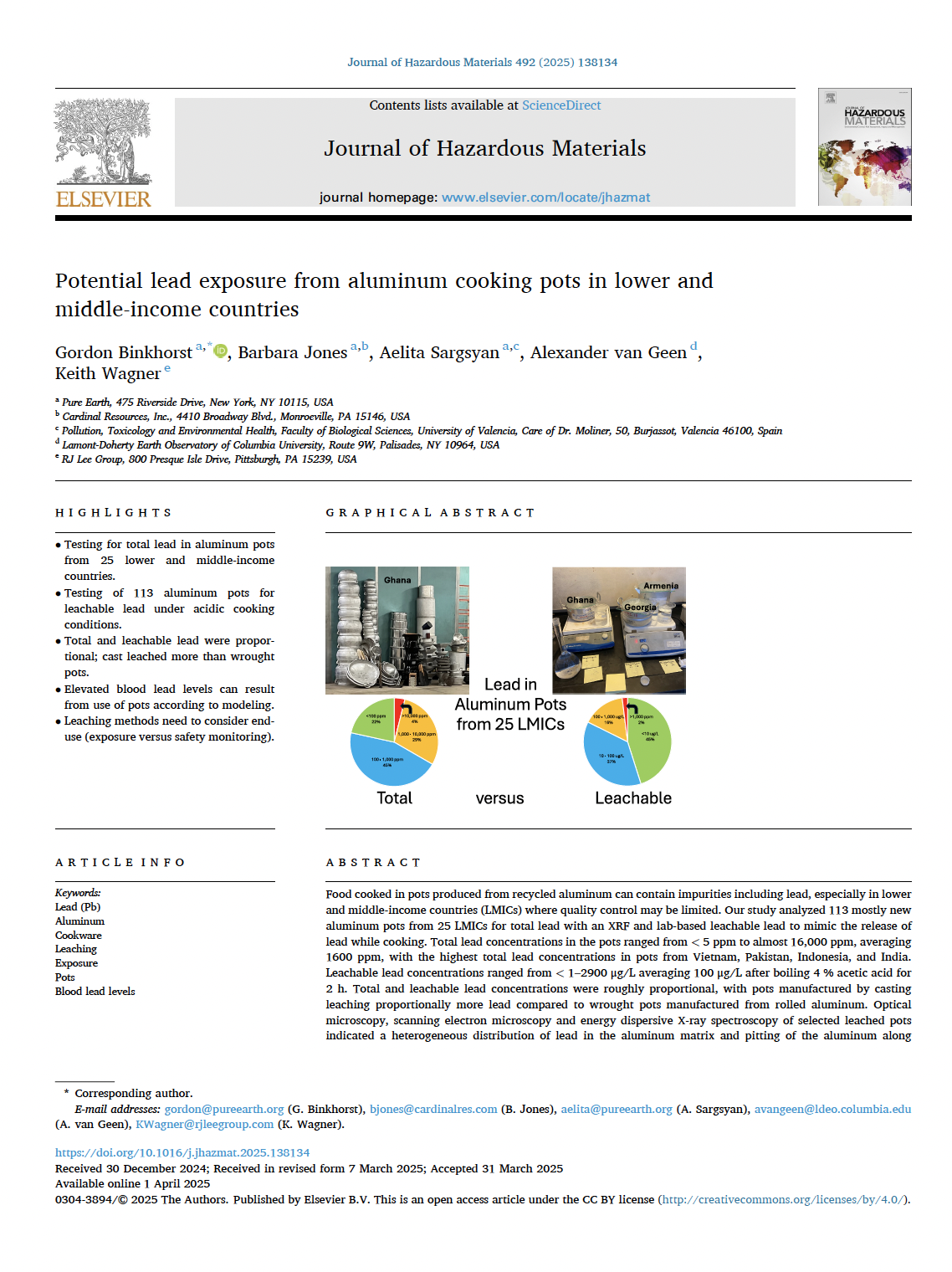Potential lead exposure from aluminum cooking pots in lower and middle-income countries
Food cooked in pots produced from recycled aluminum can contain impurities including lead, especially in lower and middle-income countries (LMICs) where quality control may be limited. This study analyzed 113 mostly new aluminum pots from 25 LMICs for total lead with an XRF and lab-based leachable lead to mimic the release of lead while cooking. Total lead concentrations in the pots ranged from < 5 ppm to almost 16,000 ppm, averaging 1600 ppm, with the highest total lead concentrations in pots from Vietnam, Pakistan, Indonesia and India. Leachable lead concentrations ranged from < 1–2900 μg/L averaging 100 μg/L after boiling 4 % acetic acid for 2 h. Total and leachable lead concentrations were roughly proportional, with pots manufactured by casting leaching proportionally more lead compared to wrought pots manufactured from rolled aluminum. Optical microscopy, scanning electron microscopy and energy dispersive X-ray spectroscopy of selected leached pots indicated a heterogeneous distribution of lead in the aluminum matrix and pitting of the aluminum along preferential pathways. Modeling using U.S. EPA’s All Ages Lead Model indicated that leachate concentrations > 250 μg/L, found in about one-tenth of the pots tested, could result in blood lead levels that exceed the WHO’s intervention threshold of 5 μg/dL in children and women of child-bearing age. This could be an overestimate, however, as laboratory leaching conditions were probably more aggressive than typical foods.
